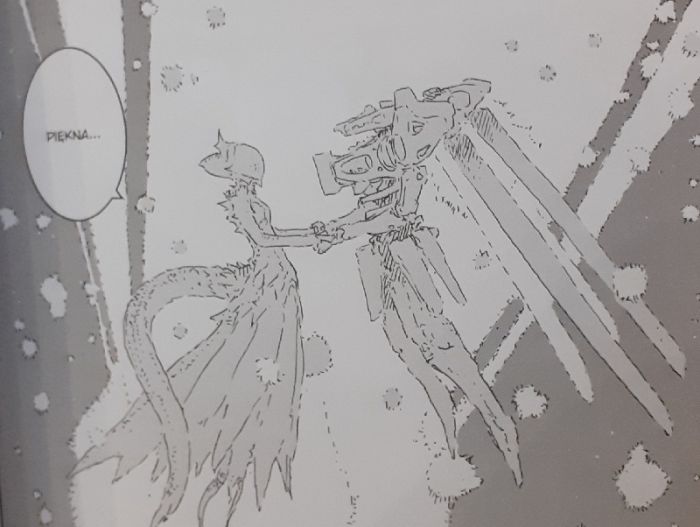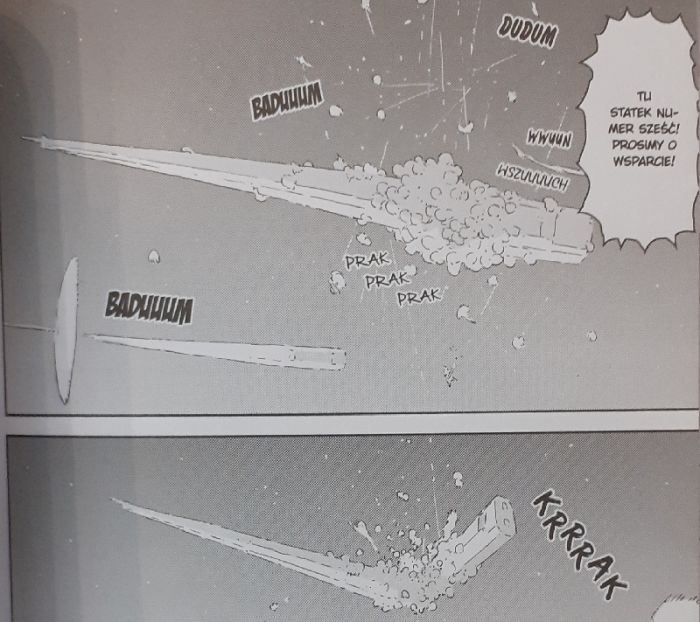Tsutomu Nihei admitted in one of the interviews that his best known title - Blame! - was created without a big plan. The Knights of Sidonia, in turn, were to be his first "normal" manga - thoughtful, pleasant and accessible. Was the mangaka mission successful? [Note, the review contains traces of spoilers.]
The last volumes of the Knights of Sidonia present the end of the over 1,000-year-long conflict between the remnants of human civilization and the Hermits. Until now, mankind has always been in a losing position, defending itself against numerous attacks by mysterious and dangerous beings.
However, Captain Kobayashi bets everything on one card – Sidonia is about to go on the offensive and destroy the cluster mega ship, the largest alien unit encountered so far. At the same time, the heroes will face the internal enemy, the mad scientist Ochiai.
Quo Vadis, Nihei
In a previous review, I doubted Nihei’s direction was right. Although the series was about to end, the mangaka spent a lot of time on “filler” threads, which should have been introduced much earlier (if at all). Unfortunately, volume twelve, and most of the time thirteenth, make this mistake again, bringing to mind the formula “Pustelniak of the week” rather than keeping the story to the end, and the events presented in them do not have much impact on the whole. This approach is all the more astonishing as the last two volumes seem to be put together quickly. The climax offers a lot of dramatic scenes, a lot is happening here, but at the same time the pace does not let everything sound out properly. It looks like Nihei wants to end his story quickly,

Hero’s wilderness
It is the heroes who suffer from this approach. Nagato Tanikaze was a fairly transparent protagonist from the beginning – always polite, questioning orders only in a state of extreme necessity. His unparalleled fighting skills make him a kind of Gary Stu, who makes everything perfect without much effort. And it remains so until the very end. Even at the moment of finding out the secret of its origin, Tanikaze doesn’t react with anger, which is a very boring solution. There is no change in his behavior here, he goes no way between the first and last volumes. The most interesting thing in all this is the ever-closer relationship between the protagonist and Tsumugi, a hybrid of a human and Pustelniak, which appears in two forms: colossal (equal to the height of the guards) and… tentacle. Interspecies romance is a bold,Sidonii touched on the “rom comu” or, worse, “harem” leads. And yet Nihei at the end bungles it all, humanizing the heroine.

And somewhere else not much better
Other elements are similarly neglected. The interesting political foundation and the ruthlessness of the Kobayashi captains do not bring any consequences. Crazy Ochiai’s plot adds tension, as the heroes also have to struggle with an internal enemy, which is as ruthless as Pustelaki. Unfortunately, his motivation is not adequately portrayed, making him another mad scientist that pop culture has seen many. What about Yuhata and Izana, the two most important side characters? Good question that even Nihei himself probably doesn’t know the answer to. Therefore, the heroines play a marginal role in the finale, and the epilogue with them is almost caricatured.
From the very beginning, the strength of the series was Pustelniaki (to this day I am very grateful to the translator Tomasz Molski for his creative approach to names), in which there has always been a secret. They led to an almost complete extermination of humanity, although their motivation was shrouded in mystery from the very beginning. Was it a ruthless attack? Or maybe an unsuccessful communication attempt? After all, monsters tried to make themselves look like humans for most of the volumes. And what? And the fig! Nihei completely ignores this plot, and Hermits at the very end just turn into a shapeless swarm of enemies. I absolutely do not understand how the potential behind them could be squandered and not give the reader any satisfactory answer. Shame, Mr. Nihei!
From the beginning of the manga, I was measured by poorly woven fan service . I regret to report that its level is maintained to the very end. If only the mangaka had an idea for this type of scene. Well no. All kinds of jokes are still based on accidental voyeurism or falling into the boobs of the heroines performed by Tanikaze or other men.

Geometry versus tentacles
The Knights of Sidonia is a fully authorial manga – each element was made by Nihei, who is responsible for both the script and the drawings. The latter are made without the helpers typical of the Japanese market. This allows you to fully admire the artist’s craftsmanship, both in unusual geometric designs of robots and spaceships, and in disgusting, tentacle-filled creatures. However, I must admit that the action scenes are not always fully transparent, because the line in many places can be very sloppy. Until the very end, I didn’t get used to the decision that all characters should have almost identical facial features, and the only difference was their hairstyles.
Who is that? Hermit crabs
I complain and complain, and yet I do not consider the time spent with the fifteen volumes of the Knights of Sidonia wasted. In terms of dramatic and military SF themes, it’s a great manga series.
Despite the poor finale, which promised much more, and even in the face of the neglect of quite interesting heroes (side characters! Sometimes the journey is more important than its ending, and the Knights of Sidonia are such a case .

